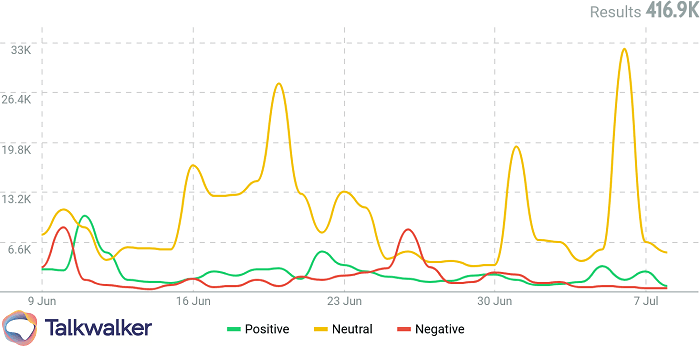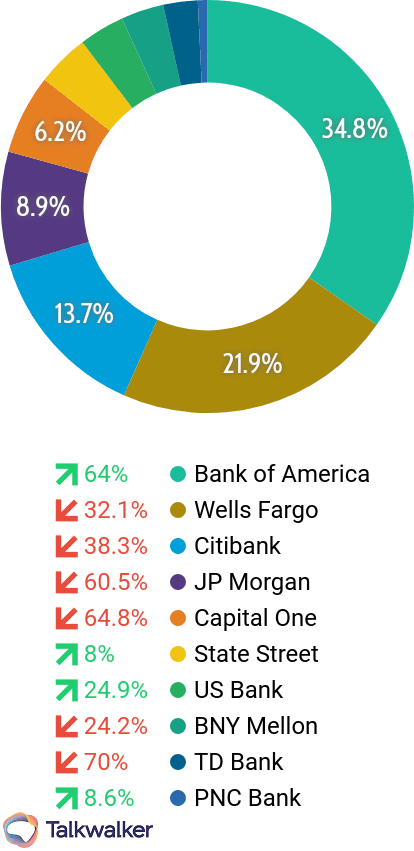Is earned media value (EMV) valuable?
Earned media value is an industry standard for measuring social success. But is it that valuable? And are there more metrics you could use to ...
February 3, 2024

What does EMV stand for?
Depending on the industry, EMV can stand for several things. In finance, it is a payment standard based on the names of the originators - Europay, Mastercard, and Visa.
In risk management, it’s a statistical technique used to assess an expected loss or gain. It stands for expected monetary value.
In this blog, we cover social media marketing, so EMV means earned media value.
What is earned media value?
Earned media value (EMV) calculates the importance of branded content gained through marketing or PR efforts. It excludes paid media (advertising) and owned (from your media channels). Earned media performance includes blogs, referrals, social posts, influencer marketing, reviews, and more.
Check out our Essential Guide | Paid vs earned vs owned media, for details on the differences between media types.
The EMV formula can be useful for calculating your brand's earned media (literally, your online word of mouth). But it has its pitfalls too. You can manipulate any formula to justify the means, and EMV is no exception.
To prove real success, you should never use EMV alone, but as part of an effective measuring and reporting strategy.

Are people falling out of love with earned media value? - Online mentions of EMV are pretty consistent over 13 months, with 162,000+ mentions. Talkwalker Media Monitoring
How to calculate earned media value
The first question is, how to measure earned media value? Much like advertising value equivalency (AVEs), EMV tries to provide a formula for calculating your digital marketing strategy impact. Usually, by comparing it to similar media outreach.
The typical earned media value formula usually includes:
A reach metric. Whether that’s potential audience, number of followers, total number of impressions.
Multiplied by an equivalent cost per thousand. E.g. to measure the reach of a Facebook campaign, you’d use the cost per 1,000 impressions of Facebook paid advertising.
Multiplied by another factor depending on the use case or user, to align results with brand needs.

As you can see, earned media value calculations aren’t great.
“Vanity metric voodoo”
“Earned media value (EMV) is one of those abstract marketing concepts that employs its own special form of vanity metric voodoo.”
Jeff Ernst - CEO & President, Symec - writing on CMO.com
The issue with these earned media value equations is that they rely on a lot of vanity metrics. Each of the above could help lead to misleading results -
Potential reach/impressions
This isn’t always the number of social media users who have seen your message. Just the people who may have done. We all love scrolling through our social networks, with ads coming and going.Did that impression make a difference? Did a follower see that post? If not, then how does that impact your brand?
CPM equivalent
With this, you’re comparing one value against another. It’s apples and oranges. Earned media works very differently from advertising. 84% of millennials don’t trust advertising.Yet, coincidentally 84% of consumers trust peer recommendations above all other sources of advertising. By comparing the EMV of recommendations to ads on the same platform, you could be undervaluing your efforts.
Other factorials
And here’s where the distrust can come in. By adding in extra numbers, you risk massaging the figures to demonstrate success without providing value to your company. It also makes it difficult to compare your different campaigns, if you use different factors across channels or regions.
Are EMVs worthless?
Not at all. It’s great for giving you a general overview of your marketing, PR and media strategy efforts. But it isn’t very data-mature.
Data maturity is about aligning your data across your company to ensure efforts are leading to one main goal. Typically, the success of the company.
EMVs are more of a stopgap. Yes, they can help measure your media mentions, but they don’t demonstrate impact. How did those results lead to sales, growth, and success?
So, I’m not saying to not use EMVs. I’m saying, dig deeper into the data, and combine them with other metrics to prove the value of your marketing efforts.
So, how do you calculate the value of earned media?
Simply use other metrics to define your success. Here are some alternatives to incorporate into your measurement strategy:-
Engagement
To counteract the potential risk that potential reach has, incorporate engagement metrics to understand how valuable a piece is.
Content that reaches a smaller, more engaged audience is much more valuable than content that reaches more unengaged people. So engagement metrics matter at this level.
It may not correlate directly with sales, but you should measure your engagement regularly (and against your competitors). This shows how effective your strategy is, and identifies elements that you can replicate across the board.
Sentiment
Incorporate sentiment into your monitoring where possible. Consider a content piece created by a third party, that’s shared fairly widely. Using a basic earned media value formula, you could see that as pretty valuable.
But what if it’s a negative review? One that could potentially damage your brand?
The EMV doesn’t factor this into its equation. Negative sentiment can directly impact sales. Inversely, we can assume positive sentiment does too. Sentiment is more mature and valuable for reporting the impact of your efforts.
You can identify the sentiment of content by using social listening tools.

By looking at sentiment spikes, you can quickly see if something is driving positive or negative EMV. Talkwalker Media Monitoring
Share of voice (SOV)
EMV gives you an idea of how many people are talking about your brand. It doesn’t help you compare your brand against your industry.
By adding share of voice into your mix, you can see how many mentions your brand is driving. And how that compares with your competitors.
For example, you could gain a mention on a popular blog, giving you a high earned media value. If your competitors did the same, but in 3 blogs, your win is less valuable. SOV helps you benchmark these levels.
And again, you can directly link your share of voice to market share, as per a case study from Millward Brown. Meaning it is a more mature metric, demonstrating the true impact of your marketing.

You need to assess how your competitors are performing to decide if your EMV is adding value to your business. Talkwalker Media Monitoring
And there’s more…
When it comes to earned media value, it’s up to you whether you should measure it or not. There’s a time and a place that shows its value, but there are better metrics out there to measure your results.
And demonstrate the impact of your efforts to your C-suite.
To understand the impact of all your earned mentions, Talkwalker Media Monitoring can help. It gathers and analyzes data from social media platforms, news, reviews, and more. To learn more about it, click below.
{{cta('92220962529')}}
